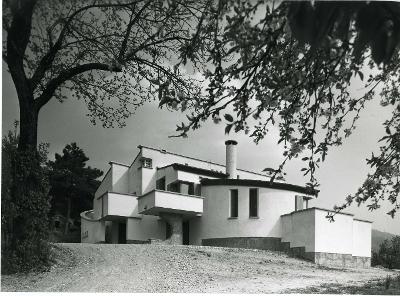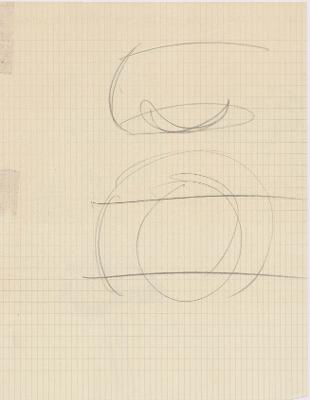Casa Bassetti, Azzate










Giampaolo Cantù (direzione lavori)
Ignazio Vigoni
Elena Balsari Berrone (progettista del verde)
Fratelli Bassetti
Load-bearing structure: visible reinforced concrete piers; load-bearing brick wall
Façade: white plaster coating
Windows: natural pitch-pine, with shutters
Roof: roof garden (south side); copper sheet pitched roof (north side)
Villa Bassetti stands on a rugged piece of land close to a terraced hillside facing Lake Varese and is surrounded by a pine grove, left untouched during the project.
Its complex plan, with three functional volumes, reflects the designer's attempt to adapt the house to the lie of the land. An entrance portico along the north-east side of the house leads to the day area and the living room, accessed directly from the steps under the portico. A staircase leads from the ground floor to the intermediate first floor with the studio and guest rooms and then on to the upper floor with the master bedroom overlooking the living room decorated with a drawing by Renato Guttuso hanging against a white plaster wall. The servants' wing, at the same level as the entrance portico, includes the kitchen and dining room opening onto a partially covered loggia. Instead the north-west front is characterised by a fan-shaped volume with the children's bedrooms, accessed by an independent staircase and arranged around a communal playroom. The children's area and the garage are covered by roof garden terraces while the rest of the house has pitched, copper sheet roofs. The interior floor plan has been radically modified to create four independent apartments.
Together with the villas in Ello, Carimate and Barzana, the house in Azzate - radically modified over the years - is part of a study on contemporary living, considered the "bridgehead" of a modernist "Palladianisation" of the traditional holiday landscape of the Lombard aristocracy. In the sixties Magistretti's architectures boosted the nonchalant revival of dwelling-in-nature embodied by the informal country houses of an upper class that had learned to appreciate industrial design as a new form of signature collectionism. Rather than individual "objects", Magistretti proposed sophisticated environmental paintings (Irace, 1999, p.23).
La forma della funzione, in Design Habitat, settembre 1973
A. Terzi, La parola ai progettisti, in Ville e giardini, giugno 1986
N. Zanotti, A scuola dall'architetto Magistretti, in Il Piacere, novembre 1986
R. Bianchi, Bozza di articolo "I tre volti di Magistretti" per La mia casa, dicembre 1991
C. Bellini, Il mestiere di architetto, in Habitat Ufficio 21, settembre 1986
V. Magistretti, Relazione di progetto, Casa Bassetti, Azzate, 1960-62
Residenza di campagna sopra Varese, in Abitare 25, 1964
G. Ponti, Una casa di Magistretti, in collina, in Domus 409, dicembre 1963
R. Aloi, Villa Bassetti ad Azzate, Varese, in Ville di Oggi, Hoepli, Milano, 1964
Ad Azzate, in Ville & Giardini 172, dicembre 1982
A. Dal Lago, Arredamento moderno, Milano 1966, pp. 116-118
L. Crespi, A. Del Corso, Un secolo di architettura a Varese, Firenze 1990, pp. 120-121
V. Pasca, Vico Magistretti. L'eleganza della ragione, Milano 1991, pp. 44-45
F. Irace, V. Pasca, Vico Magistretti, architetto e designer, Milano 1999, p. 62
-
segnatura: 177 (17 immagini)

-
segnatura: 177 (29 immagini)
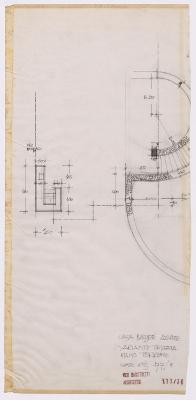
-
segnatura: 177 (59 immagini)
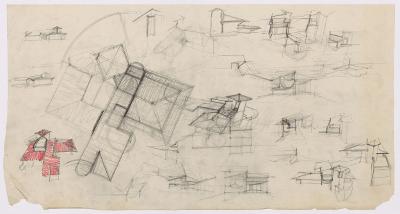
-
unità n. 3017 (a-b) (8 immagini)
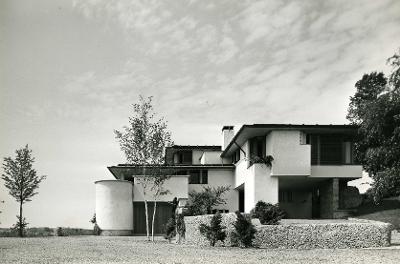
-
Abitazione, Casa Muggia a Barzana, avvocato Muggia

-
Abitazione, Casa Cassina a Carimate, Cesare Cassina
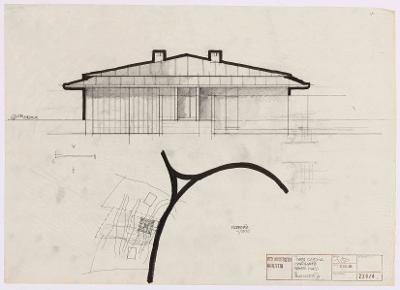
-
Abitazione, Casa"Il Roccolo" a Ello, famiglia Schubert
